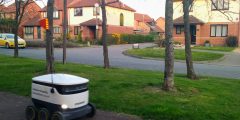The human side of AI: Delivery robots in Milton Keynes
November 17, 2023
This post has been written in collaboration with Alan Miguel Valdez, Lecturer in Technology and Innovation Management, The Open University, Milton Keynes *** At the beginning of November 2023, an international AI Safety Summit took place at Bletchley Park, the iconic location of World War II code breaking feats. What has perhaps not been stressed …
Science and trust – the sequel
November 10, 2023
In 2018 a new ‘International Science Council’ (ICS) was established and I wrote a blog post in which I critically dissected the announcement of this launch. I tried to show that this announcement seemed to perpetuate a series of misconceptions relating to science and trust. At the end of October 2023, the ISC Centre for …
Super-intelligence and Supercomputers: When frontiers collide
November 3, 2023
This post has been written in collaboration with Alan Miguel Valdez, Lecturer in Technology and Innovation Management, The Open University, Milton Keynes (the home of Bletchley Park and of little roaming robots) *** This week the UK AI Safety Summit took place at Bletchley Park, an iconic location associated with British codebreaking feats during World …
Frontier AI: Tracing the origin of a concept
October 20, 2023
The UK government has convened an international AI Safety Summit at Bletchley Park, Buckinghamshire which will take place on 1 and 2 November, 2023. On 16 October the Department for Science, Innovation and Technology tweeted: “The agenda for the opening day of the #AISafetySummit has been published. The UK is laying out a focused plan …
From Omicron to Omega: What’s in a name?
September 22, 2023
The last few years have been years of planetary upheaval. We have all lived through a Covid-19 pandemic and are, in fact, still living with it, and we have all felt the effects of climate change. To deal with these planetary events, we had to invent and learn new concepts and new names. Quite recently, …









